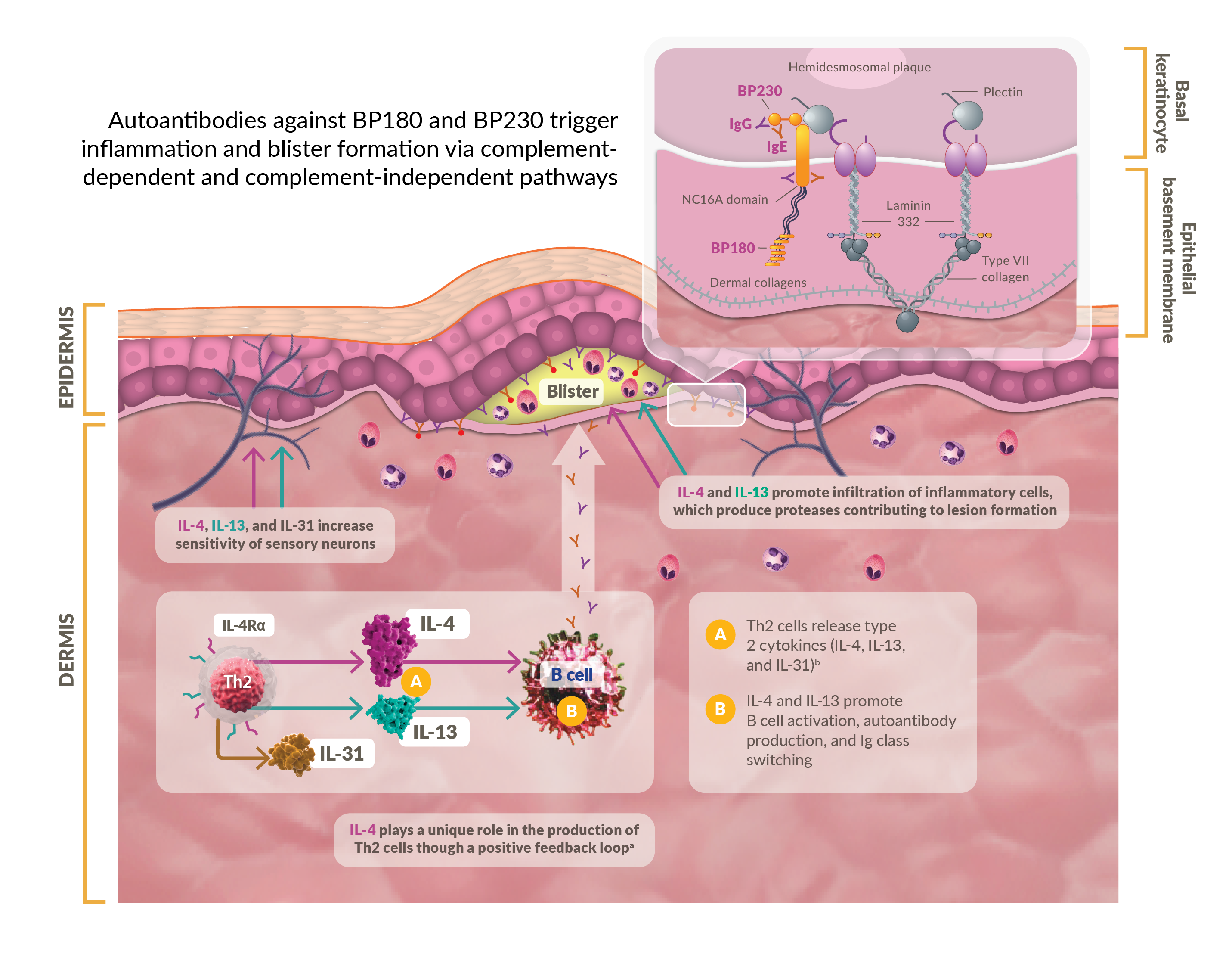Dual inhibition of IL-4 and IL-13 signaling may help1:
REDUCE TYPE 2
INFLAMMATION
REDUCE
ITCH
ACHIEVE
SUSTAINED REMISSION
The mechanism of dupilumab action has not been definitively established.
Type 2 cytokines such as IL-4 and IL-13 contribute to the development of the
itch and lesions of bullous pemphigoid3-10
aIL-4 acts on both type I and type II receptors to mediate type 2 inflammation.2
bType 2 cytokines (such as IL-4, IL-13, and IL-31) may also be produced by other immune cells, such as ILC2.11,12
IL-4 and IL-13 signaling help drive type 2 inflammation by
promoting Th2 response, driving Ig class switching, and
recruiting inflammatory CELLS3,8,9
c Dimerization is when 2 protein subunits combine to form a larger complex. IL-4 signaling through type I receptor requires dimerization of the IL-4Rα with the gamma
chain. IL-4 or IL-13 signaling through type II receptor requires dimerization of IL-4Rα with IL-13Rα1.
IL-4 SIGNALING
(TYPE I RECEPTOR)
IL-4/IL-13 SIGNALING
(TYPE II RECEPTOR)
DO YOU HAVE PATIENTS WHO
MAY BE READY FOR DUPIXENT?
MAY BE READY FOR DUPIXENT?



